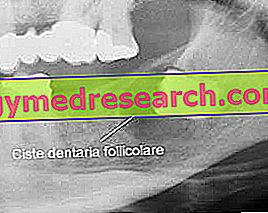What is histoscopy?
Cystoscopy is a diagnostic procedure aimed at the visual exploration of the internal walls of urethra and bladder, in order to identify any anomalies and make tissue samples for diagnostic and / or therapeutic purposes.

Why is it performed?
Cystoscopy is indicated in the presence of urological symptoms such as hematuria (blood in the urine), dysuria and stranguria (difficult and painful urination), inability to empty the bladder (urinary retention) or sudden and uncontrollable urge to urinate. It is also indicated in the presence of various urinary tract problems, such as recurrent infections or urethral strictures due to prostatic hypertrophy, kidney stones or tumors.
The cystoscopy represents, in particular, the "gold standard" (ie the reference test) in the diagnosis of bladder cancer and as such should be performed whenever - from imaging tests and urinary cytology or other predictive markers - the suspicion of bladder growths.
Operative cystoscopy
During cystoscopy, in addition to examining the internal lumen of the organ, small tissue samples can be taken from suspicious lesions and sent to the laboratory for cytological examination (microscopic investigation of tumor cells).
In many cases, moreover, cystoscopy allows the tumor formation to be removed, destroying it through electric current or high energy laser beam; after surgery, it is repeated periodically to check for recurrences.
Also as a minimally invasive interventional procedure, cystoscopy allows treating other urinary problems, for example removing stones, diverticula, foreign bodies or benign or malignant abnormal formations.
How to do it
Preventive anesthesia
Cystoscopy is known, especially in humans, for its annoyance, however attenuated by the use of lubricating gels containing anesthetic; if necessary, should the examination become particularly annoying (for example due to urethral narrowings), the urologist may decide to suspend the procedure or continue it after using anesthetic assistance.
Spinal or general anesthesia is also commonly required when cystoscopy is associated with the surgical procedures described above.
During the exam
During the examination, a thin rigid or increasingly commonly flexible instrument (cystoscope) is gently inserted into the bladder through the urethra (the channel that conveys urine to the outside).
In the presence of strictures (narrowing) of the urethra, lower caliber cystoscopes are available; the same can be used to reach the ureters (which convey urine from the kidneys to the bladder), for example if removal of obstructive stones is necessary. In general the doctor chooses thinner cystoscopes when the examination has purely diagnostic purposes and larger caliber cystoscopes when it is necessary to pass small surgical instruments inside them.
Thanks to a camera and a light source mounted at the apex, the flexible cystoscope transmits images of the urinary tract on the appropriate monitor; in the traditional rigid model, on the other hand, observation is made possible by a lens system similar to that of microscopes. In order to improve the vision of the bladder, the urologist introduces a sterile liquid into the lumen of the organ, stretching its walls. The procedure is not in itself painful, but often causes an annoying need to urinate.
If necessary, the urologist can introduce some additional instruments through the cystoscope, in order to carry out the aforementioned therapeutic procedures (removal of stones, bladder biopsies, resections of tumors, cauterizations, laser excisions, etc.).
Standard cystoscopy usually lasts a few minutes. The execution time can however be extended if other procedures are carried out, such as the removal of a calculation or a bioptic withdrawal.
Preparation
No special preparations are normally required. For preventive purposes (prophylaxis), antibiotics can be given, in order to reduce the risk of urinary infections. In the most anxious patients, a sedative may be administered one hour before the test. Any use by the patient of anticoagulants and / or anti platelet aggregants, such as aspirin or coumadin, must be temporarily suspended according to medical instructions, and possibly replaced with low molecular weight heparin.
In the case of general or spinal anesthesia, the patient is explicitly asked not to drink or eat within four to eight hours before the test. Furthermore, a short hospital stay is expected after the operation.
Side effects
The most common side effect of cystoscopy is a temporary urethral swelling, which can make urination difficult; when the obstacle becomes important to the point of preventing the normal expulsion of the urine, it is necessary to temporarily apply a bladder catheter.
Small bleeding episodes in post-surgery (uretrorragia) tend to disappear spontaneously in a short time, while the risk of urinary infections is reduced by the use of antibiotics before and after the procedure. Should these occur, the patient may experience symptoms such as pain or burning sensation when urinating, urinary incontinence, urge to urinate frequently, associated with a feeling of incomplete bladder emptying, and emission of rust-colored or foul-smelling urine.
In the case of abundant hematuria (bright red urine), emission of clots, fever or an important obstacle to long-term urination, the patient should contact the specialist. To these possible side effects are added those related to general anesthesia and instrumental maneuvers performed during cystoscopy, which in very rare cases can produce lesions of the urethra or bladder that require immediate surgical intervention.
The resolution of the small disturbances commonly felt at the end of cystoscopy can be favored by a generous hydration and by the application on the urethra of a cloth soaked in hot water for about 20 minutes.



